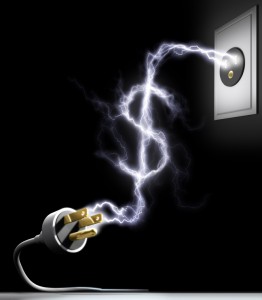Building Energy Efficiency: Restaurants Waste Energy In Different Ways
US businesses waste $60 billion yearly on energy, according to a recent report by E Source, which looks at energy data from various industries including retail, healthcare, data centers and manufacturing.
 But restaurants, which are among the biggest energy wasters, waste energy differently than those other industries, explains Linda Hardesty of Energy Manager Today.
But restaurants, which are among the biggest energy wasters, waste energy differently than those other industries, explains Linda Hardesty of Energy Manager Today.
In most commercial businesses, energy use is attributed to lighting and HVAC use. But almost two-thirds of the energy use in restaurants is related to kitchen activities, according to the article.
In fact, about 80% of the $10 billion the commercial food service industry spends each year is consumed by wasteful cooking methods, claims Pacific Gas and Electric.
Restaurant owners and managers can look to their local city departments or utility providers to learn how to reduce waste and save energy.
City websites such as the restaurant waste reduction page for Wilson, North Carolina provide tip sheets on how restaurants and other food service providers can reduce, reuse, and recycle their waste, and how to conserve electricity and water.
Restaurants can save energy by implementing energy saving tactics. The City of Wilson suggests several including:
- Use energy-conserving fluorescent bulbs
- Clean and maintain all equipment on a monthly schedule
- Calibrate ovens and check pipes for leaks monthly
- Clean refrigerator coils on a regular schedule
- Change air conditioner filters regularly
- Use energy-efficient appliances
- Use low-flow faucets and toilets in bathrooms
- Use motion-activated lights in bathrooms
The proof is in the numbers.
For example, replacing an older ice machine with one that is 19% more efficient will save as much as $710 per year, according to Hardesty. And replacing a dishwasher with a more energy efficient model can save $1,225 annually.
Hardesty estimates each restaurant that implements an energy management system could save as much as $2,200 and $3,600 on energy every year.
When it comes to the issue of food waste, the Environmental Protection Agency (EPA) says food waste must be diverted from landfills because when it decomposes it creates methane, a greenhouse gas that affects climate change.
The EPA highlights the East Bay Municipal Utility District as a pioneer in changing the way food waste is handled.
The sewage treatment plant was the first in the US to use anaerobic digestion to turn food waste into energy.
With anaerobic digestion food scraps are collected from restaurants and other food service providers and transported to the plant. Once at the plant, an anaerobic digester breaks down the food to release methane.
The methane is captured and used as a source of energy to power the treatment plant, decreasing food waste and alleviating climate change, while also producing a source of renewable energy.
The EPA says if we can find ways to anaerobically digest 50% of the food waste generated annually in the United States, we will be able to produce enough electricity to power more than 2.5 million homes per year.
Next Steps:
- Subscribe to our blog to receive the full blog series via email and stay informed about the latest HVAC news and insight.
- Stay up to date on facility maintenance tools such as chiller tube cleaners, boiler tube cleaners, hose/pipe cleaners, descaler systems, industrial vacuums, commercial pressure washers, and drain cleaners.


How Do Restaurants Waste Energy? - Refrigerant Supply, Inc.
[…] Building Energy Efficiency: Restaurants Waste Energy In Different Ways […]
Energy Waste in the Foodservice Industry - Energybox
[…] Goodway […]